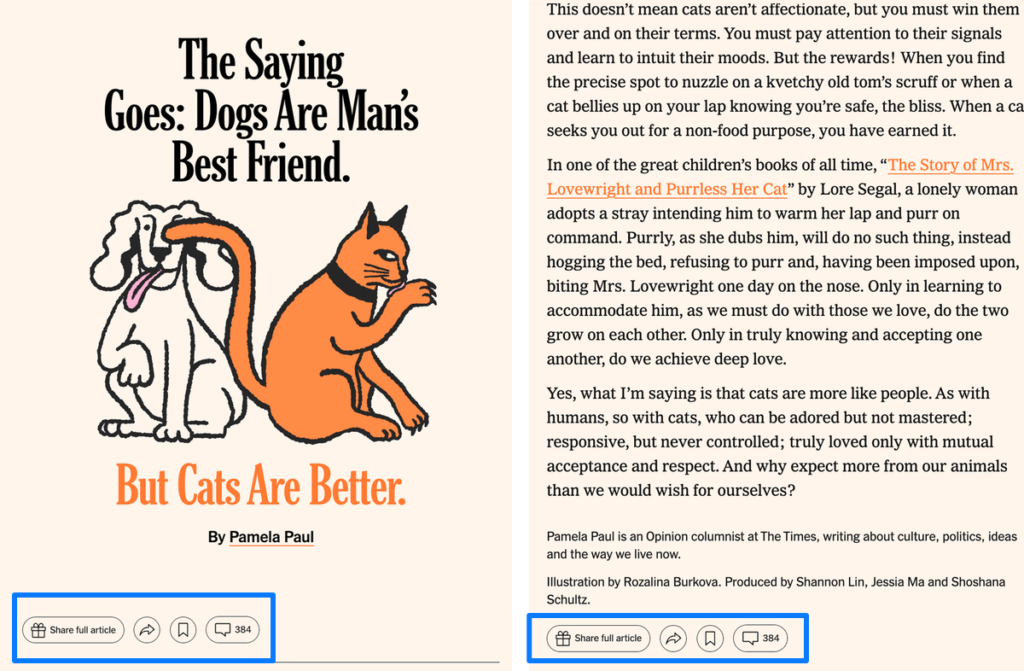The debate about the changes, trends, and direction of growth in the digital publishing industry is not a discussion about books and magazines. It is a debate about the development of technology or, to be more specific, about how it has changed our daily lives. This impact is much greater than we think.
It comes to your attention when you observe kids. Have you had a chance recently to see how a few-year-old children open and use a notebook or a book today? If not, prepare to be shocked. One of the recent reports shows they are trying to swipe or tap pages like a smartphone or tablet.
We can not blame them. These kids were born in a world full of interactive screens which were put in their hands from an early age. They treat every paper-page thing in the same way as devices, reflexively and intuitively.
For such a tech-savvy generation (and each next one will be even more agile), traditional publications will be unattractive and simply boring. It’s like someone would order you to communicate with them by writing a letter on a typewriter instead of sending a message on one of the popular channels.
You can do it, but to what end?
Digital publishing list of advantages
This (maybe a bit ridiculous) example shows that changes in writing, delivering, and reading written words are nothing new. What the publishing industry is dealing with right now is a general pivot to digital platforms, forced by the earlier changes. According to Statista, although some print media formats remain popular among U.S. consumers, online newspapers and magazines as well as digital books have been gaining traction for years.
No wonder, after all, the benefits and opportunities of transitioning from traditional print formats to digital publishing platforms remain remarkable, both for publishers and readers.
Everywhere and for everyone
Let’s imagine that your print magazine is available all over the world. In every country, the cover of your title looks out from the windows of newsstands. People from any part of the globe can buy it just around the corner. It is a dream of every entrepreneur, isn’t it?
Now think about the complexity and difficulty of this operation: complicated logistics, a lot of people engaged in the process, warehouses needed for storage, printing houses, carriers but most importantly, unimaginable costs. What a nightmare!
Well, the thing is, the first part of this dream could be achieved while avoiding the second one. Wide reach and global audience without the additional costs of printing and physical distribution is one of the most important assets of digital publishing. Readers can access content from anywhere and at any time using mobile devices and computers which eliminates any difficulties in accessing your content.
The only difference is that the cover does not pop out of the newsstands’ windows but from the devices’ screens. I guess it’s not such a big pity, especially for readers who prefer this way of consuming content today.
Sharing is trendy
That group is growing. How is text on screen better than on paper for them? Basically, there is no difference. Both can be written by an excellent author (maybe even the same person). It is more about what you can do with this text later and here digital beats print.

The online format of publication allows for easy sharing and collaboration with only one click. Readers can easily send articles, e-books, and other content to their friends, family, and followers, fostering discussion and creating a sense of community around the piece of content. Social media platforms have played a significant role here.
Thanks to them, the reading process is no longer one-way. Today, it is a dialogue not only between the author and the reader but also an exchange of ideas between other readers from around the world, without the need to join a reading group in the library.
Never again boredom
So what makes readers willing to share content publicly? What influences their impressions?
The answer is interactivity. Something that print will never offer unless we move to the world of Harry Potter in which newspapers are provided with moving photographs. I guess, it will probably be easier to move your content on a digital publishing platform (cheaper, for sure).
The possibilities of engaging readers by interactivity are huge and it can be said that their development possibilities are still in progress, as long as better and better technological possibilities are created, and certainly as long as AI and augmented reality are in the game.

At this point, the use of videos, recordings, links, and social media integration is an absolute necessity to arouse curiosity, increase attention span, and give the content a chance for free promotion on the Internet. The list of benefits of adding multimedia to digital publications is even longer.
Marketing without no boundaries
A catchy piece of online media, such as a video, image, or article has a huge chance to become popular and widely shared through social media platforms, email, or other digital platforms through word-of-mouth marketing. It is called viral. And it happens on its own, basically without your participation, and certainly without the need to hire an advertising agency to prepare expensive campaigns.
While creating viral content could be difficult to achieve, any content posted on social media, that is interesting to your target group, can give amazing results: an increase in engagement, readership, and, in the long run, sales.
The best thing is that your content and materials such as the cover, photos, and recordings that are part of a ready issue will be ideal advertising material on social media. If you want to do something fancy, remember that today no one is surprised or frowned upon by a video shot recorded with a smartphone. On the contrary, it only adds authenticity and this is the most desirable value in today’s world.
A few keys to success in digital publishing
Let’s think about this for a moment.
We are surrounded by fake news and artificially generated photos from all sides. Even large media companies happen to present unverified information or news from an unreliable source, which turns out to be untrue. We don’t know what is true and what is not, who to trust, and who not to. We are constantly faced with choices and difficult decisions. We need a source we can trust and news we are willing to pay for.
For brands that are credible and offer reliable and high-quality content, this is an ideal situation to stand out.
Trust is a must
Building trust with the audience is a long-term and complex process, closely related to creating a content strategy. Everything that you create influences the following four fields.
- Reputation. High-quality and truthful content builds trust with your audience. When readers know they can rely on your content to be accurate and valuable, they are more likely to return and recommend your publication to others.
- Authority. Consistently providing well-researched and credible information establishes your publication as an authority in its field, leading to increased influence and respect within the industry.
- Engagement: Valuable content that meets the needs and interests of your audience encourages deeper engagement. Readers are more likely to spend time on your site, interact with your content, and participate in discussions.
- Loyalty: When audiences find your content helpful and trustworthy, they are more likely to become loyal readers and subscribers, leading to long-term retention and reduced bounce rates.
And this is not the end of the importance of content.
Search robots don’t sleep
You know how it works when you search for something on the Internet. You enter a phrase into the search engine and… how many links displayed at the top do you enter in? This is why being at the top matters.
Search engines like Google prioritize high-quality content that provides value to users. Well-written, informative, and truthful content is more likely to rank higher in search results, increasing your visibility and organic traffic. This increases the chance that someone will click on your catchy title and visit your website. That is why optimizing the digital magazine for SEO is so important.
What you create also affects backlinks which can be useful. The more trustworthy your website is, the bigger the chance others link to it. The whole process improves your domain authority and further enhances your search engine rankings, and they, like many other factors, should be regularly tracked and analyzed by you.
The power of data
When you sell a print magazine, basically the only variable you can analyze and draw conclusions based on is the number of copies sold. You don’t know if someone bought the issue to read it and then gave it to a friend, or maybe someone needed colorful paper for cutouts for a child.
In fact, you know very little about the readers and their purchasing preferences.
Digital platforms are a completely different world when it comes to collecting information about every visit to the website and every purchase. By leveraging analytics tools, you can track user behavior, such as page views, time spent on articles, and engagement rates. This data provides insights into which topics resonate most with readers, allowing you to tailor content to meet audience preferences. You can also identify trends easily, measure the effectiveness of marketing campaigns, and optimize ad placements.
In one word, analytics give you unlimited opportunities to understand audience behavior and, as an effect, tailor both the content and the sales offer to them.
Tailor-made offer
Moving to online publishing (or adding it to your traditional print title) means you can diversify content sales through various channels to maximize reach and revenue.
- Subscription model in which readers have unlimited access to premium articles and exclusive content. It guarantees a sustainable and predictable revenue stream. By providing readers with tiered subscription plans, you can cater to different audience needs, from basic access to premium, ad-free experiences. Subscribers benefit from unlimited access to exclusive content, early releases, and special editions, fostering loyalty and long-term engagement.
- Single-article purchases or pay-per-view options cater to casual readers who prefer flexibility and convenience. This model allows readers to access specific content without committing to a full subscription, appealing to those interested in occasional, high-quality reads. For publishers, this approach can attract a broader audience, including those who may be hesitant to subscribe. It also provides an additional revenue stream, as each transaction contributes to the overall earnings.
- Bundling content with e-books, audiobooks, or special reports can attract a broader audience by offering greater value and catering to diverse preferences. This approach allows readers to choose their preferred format, whether they enjoy reading on their devices, listening on the go, or delving into detailed reports. By providing a variety of content types in one package, publishers can appeal to different segments of their audience, increasing engagement and satisfaction. This strategy not only enhances the user experience but also boosts sales and expands the reach of the publication.
Join the digital publishing adventure
No doubt embracing digital publishing offers magazine publishers a pathway to future-proofing their business in a rapidly evolving landscape.
The transition from print to digital not only meets the expectations of a tech-savvy audience but also brings numerous advantages, including global reach, cost efficiency, and enhanced engagement through interactive features. By leveraging data analytics, publishers can gain valuable insights into reader preferences, allowing for more targeted and effective content strategies. Furthermore, the flexibility in revenue models ensures that publishers can cater to a diverse readership while maximizing profitability.
It is your choice whether you want to follow this path. If so, let us know and we will help you bring out the potential of your content in the best way possible.

